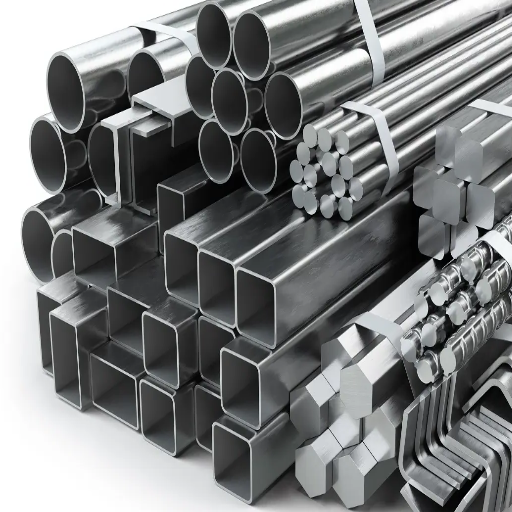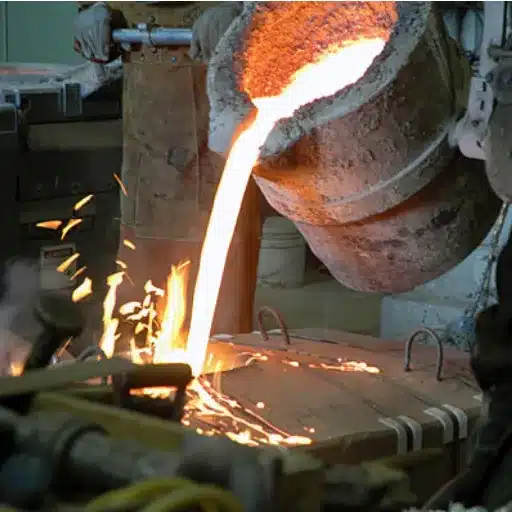Stainless steel is one of the most versatile and widely used materials across various industries, from construction and automotive to medical and culinary applications. However, not all stainless steel is created equal. Among the most commonly used classifications are the 300 and 400 series, each possessing distinct properties and performance characteristics. Understanding the differences between these two series is essential for selecting the right material for specific use cases, ensuring durability, cost efficiency, and optimal performance. This article will explore the defining traits of both the 300 and 400 series stainless steels, shedding light on their compositions, strengths, weaknesses, and practical applications, so you can make informed decisions for your projects or products.
What is the 300 Series Stainless Steel?
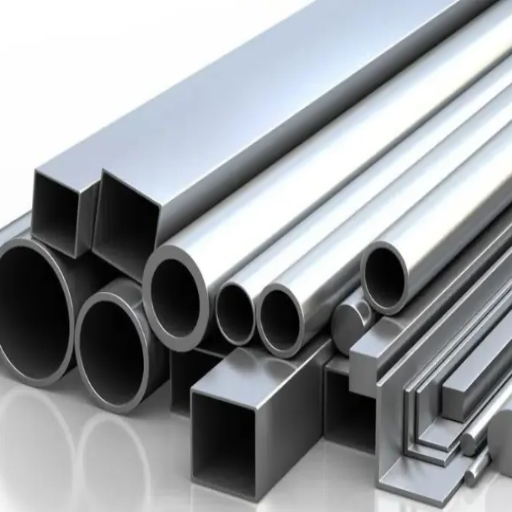
Characteristics of 300 Series Stainless Steel
The 300 series of stainless steel is characterized by the presence of chromium and nickel, which places it in the austenitic group of stainless steels. Its particular makeup helps to retain corrosion resistance even in harsh environments such as chemicals, saltwater, or extreme temperatures. Typically, chromium amounts to 16-30% and nickel to 6-22%, depending on the specific grade of the series. These elements help to increase durability and resistance to oxidation.
Perhaps the most unique feature of the 300 series is that it is non-magnetic in the annealed state. Certain grades may become slightly magnetic if subjected to significant cold working. It is also known for toughness at low and high temperatures, which enables it to withstand extreme conditions. This makes it useful in food processing, construction, chemical manufacturing, and many other fields. 304 and 316 are some of the most commonly used. 304 is popular due to its range of applications. 316 has added chloride corrosion resistance owing to molybdenum.
The 300 series stainless steel’s formability and weldability are excellent. Such properties makes fabrication into different shapes and sizes without losing mechanical strength easy. Coupled with exceptional resistance to rust and staining, its endurance to both cryogenic and high-temperature environments keeps it dependable for crucial applications like kitchen equipment, marine environments, and even pharmaceutical machinery. On the whole, the 300 series steel is the perfect blend of performance, durability, and versatility.
Applications of the 300 Series
Stainless steels of 300 series are well known in various sectors due to their unrivaled resistance to corrosion, remarkable mechanical traits, and multifunctionality. Their versatility is an advantage in applications where sustainability and cleanliness is of utmost importance.
They are widely used in the food and drink sector. These alloys are frequently utilized in the production of kitchen appliances, food storage units, and processing equipment owing to their corrosion and stain resistance, coupled with the ability to retain clean surfaces. Alloys meet strict sanitary requirements and survive acids, cleaners, and a multitude of other harsh treatments.
The medical and pharmaceutical sector is another important area of application. For biocompatible and oxidation-resistant materials, medical implants, surgical instruments, and machinery in drug manufacturing centers are made from 300 series alloys. Moreover, these grades are used for making tanks and pipelines exposed to aggressive chemicals, assuring reliability and safety.
Besides, the series has an important function in the marine and chemical processing industries. It is used in parts such as marine hardware, heat exchangers, and desalination machinery because of its resistance to corrosion due to chlorides. It is placed in many industrial applications due to its reliability in challenging environments and extreme conditions.
Corrosion Resistance and Nickel Content
Nickel is essential to different industrial materials because it increases their corrosion resistance. Nickel supplementation to alloys makes them more resistant to many aggressive environments, especially when chemicals or marine conditions are involved. The added nickel improves the alloys’ structural integrity and makes them more robust and reliable under extreme conditions.
Under some environments, especially where chloride-containing solutions, like seawater, are present, the corrosion resistance becomes critical. Nickel-containing alloys develop an adequate amount of Ni, which permits the formation of a protective oxide layer on their surface, which hinders further electrochemical reactions that damage the metal’s surface. This makes alloys containing nickel suitable materials for marine applications because they operate in highly corrosive conditions, making them widely useful in marine equipment, desalination plants, and chemical processing equipment.
Moreover, the corrosion resistance ability of nickel is not limited to only one section but also covers holding the material integrity value amid temperature changes and different chemical compositions. In addition, there are specific components like heat exchangers and pipelines which use high nickel alloys due to the mechanical strength and resistance to corrosion over time. In general, in aggressive working conditions, systems made from nickel-bearing materials decrease the required servicing intervals, increase durability, and improve reliability.
Exploring the 400 Series Stainless Steel
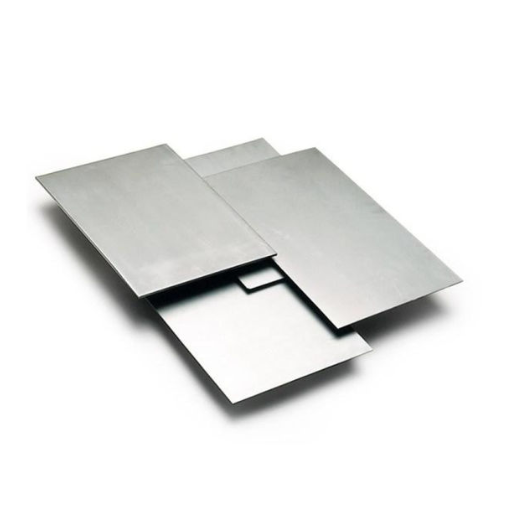
Features of the 400 Series
The 400 series of stainless steels is primarily composed of ferritic and martensitic stainless steels, and they possess high chromium content with low nickel levels. This series is well known for its good resistance to oxidation and moderate corrosion, thus being fit for high-temperature applications along with mild corrosive contexts. Such as the ferritic grade 430, it is known to possess high thermal conductivity and remarkable corrosion resistance to some austenitic grades, but relatively low toughness and corrosion resistance to highly aggressive environments.
Martensitic grades 410 and 420 are famous for their fantastic hardness, strength, and wear resistance. These grades are employed in more demanding contexts such as kerf blades, turbine blades, and oil and gas exploration components. However, the martensitic varieties do have poorer corrosion resistance than the ferritic grades due to lower chromium and their microstructural make-up. Generally, for the 400 series, their machinability is considerably better after applying heat treatments that entail precise shaping while retaining high mechanical performance.
Due to its properties, the 400 series stainless steel is economical for those industries that would require certain mechanical and corrosion resistance features, but at relatively inexpensive costs compared to high-nickel alloys. Its application in automotive exhaust systems, kitchen appliances, and industrial machinery effeciently showcases its cost effectiveness and performance. Modern developments in alloy processing and inclusion control strengthen the usefulness of these materials, reinforcing sustainability across multiple industries.
Common Uses for 400 Series Stainless
The 400 series of stainless steel is commonly used across different industries due to its affordability and usefulness. Its strength and resistance to wear make it optimum for applications that need enduring performance in demanding environments. For example, this series is commonly used in manufacturing automotive parts like exhaust systems and catalytic converters because it can endure high temperatures and corrosive gases. Additionally, some of its grades, such as 409 and 430, possess magnetic properties that allow them to be used in electrical applications such as transformers and electric motors.
In the construction industry, 400 series stainless steels are used in architectural claddings, roofing panels, and decorative trim due to their aesthetic value and corrosion resistance. They are also commonly used in kitchen equipment and appliances including cutlery and sinks due to their stain resistance and ease of sterilization. Their ease of machinability and lower price also makes them a suitable candidate for use in heavy-duty tools, fasteners, and industrial machinery.
The 400 series is now applicable in modern engineering and manufacturing due to the sophisticated layering methods and advanced/tuned annealing techniques which increase processing capabilities and coarse grain structures. A keen awareness of these applications captures the adaptability and increasing importance of this category of stainless steel in industrial design of today.
Magnetic Properties and Heat Treatment
The 400 series stainless steel possesses two types of structures: ferritic and martensitic, which greatly impact its magnetic properties. Magnetic properties like to exist in Ferritic grades, for instance, 430, owing to having a BCC or body-centered cubic crystal structure. Unlike Ferritic grades, austenitic stainless steels are usually non-magnetic due to having Face-Centered Cubic (FCC) structure. 410 and 420 are also Martensitic variants that exhibit magnetic properties, but those are highly dependent on heat treatment and carbon content level.
The mechanical and magnetic characteristics of 400 series stainless steel require modification through heat treatment, which is a fundamental procedure. Internal stress relief coupled with ductility restoration is ideal for shaping and further processing, attainable through annealing treatments between 1400°F and 1600°F (760°C to 871°C). Strength and hardness are increased by exposing the material to 1750°F to 1850°F (954°C to 1010°C) and subsequently quenching the sample in oil or air, resulting in substantial magnetic responsiveness. This is augmented due to the obliteration of ductility as well.
The appropriate amount of ductility is restored at 300°F to 700°F (149°C to 371°C) during the tempering stage, where the primary goal is to balance hardness with toughness, depending on the specific use. In applications where strong magnetic properties are required alongside mechanical durability, performance characteristics are particularly crucial; their applicability is ensured through precision with the heat treatment. Such sophistication showcases the advanced engineering capabilities made possible by 400 series materials.
Comparing 300 and 400 Series Stainless Steel
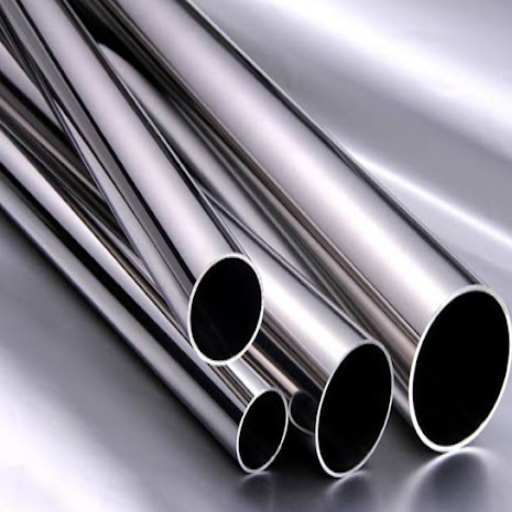
Mechanical Properties: 300 Series vs 400 Series
The differing mechanical properties of 300 and 400 series stainless steels in ductility, hardness, strength, and heat treatment capability are as follows: 300 series has more ductility and is non-hardenable by heat treatment, 400 series is harder, stronger, and heat treatable.
This is a brief table highlighting the important mechanical properties:
|
Property |
300 Series |
400 Series |
|---|---|---|
|
Ductility |
High |
Low |
|
Hardness |
Low |
High |
|
Strength |
Moderate |
High |
|
Heat Treatment |
Not possible |
Possible |
|
Magnetic |
Non-magnetic |
Magnetic |
Corrosion Resistance: Which is Better?
Because of its greater chromum and nickel content, the 300 Series stainless steel has a better resistance to corrosion in comparison to the 400 Series.
As a brief comparison, please look at the following concise table describing the resistance to corrosion for both series:
|
Property |
300 Series |
400 Series |
|---|---|---|
|
Corrosion |
High |
Moderate |
|
Chromium (%) |
18-30 |
11-12 |
|
Nickel (%) |
8-10 |
0-1 |
|
Applications |
Marine, Oil |
Tools, Auto |
Impact of Chromium and Nickel in Each Series
The mechanical functions and chemical properties of stainless steels from the 300 and 400 series are greatly influenced by the chromium and nickel content in them. Understanding the implications is as follows:
Corrosion Resistance
- 300 Series: The surface oxide is formed due to the presence of chromium in the range of 16-30% and nickel in the range of 6-20%. This layer improves the corrosion resistance property of the machine, especially when it comes in contact with highly acidic and chloride environments.
- 400 Series: The resistance towards corrosion is provided due to the presence of chromium (11-17%). Though it lacks the more enhanced protection provided by the high nickel content from the 300 series.
Strength and Hardness
- 300 Series: The addition of nickel increases strength and aids ductility while simultaneously giving moderate hardness.
- 400 Series: Due to the absence of nickel, the chromium makes the steel harder and stronger, especially after undergoing heat treatment.
Thermal Stability
- 300 Series: The presence of nickel improves the stability and resistance to thermal expansion for high temperature applications by minimizing the precipitation of grain boundary carbide.
- 400 Series: This subset is unable to provide additional nickel thermal stability, therefore increasing the risk of high temperature distortion.
Magnetic Properties
- 300 Series: Nickel renders the metal non-magnetic, a highly valuable feature for electronics and medical instruments, improving the applications of the material.
- 400 Series: The type is fit for certain industry purposes such as automobile machinery, as lack of nickel gives it magnetic behavior.
Cost Efficiency
- 300 Series: It is more expensive due to higher alloys of nickel, but it is best suited for long-term, high-efficiency uses.
- 400 Series: It has lower costs of nickel and alloy, so it is more economical, but has weaker properties, such as corrosion resistance.
This analysis in detail showcases how funds, as well as chromium and nickel differences for the 300 and 400 series, can be utilized depending on requirements.
Cost Considerations: 300 and 400 Series Stainless Steel
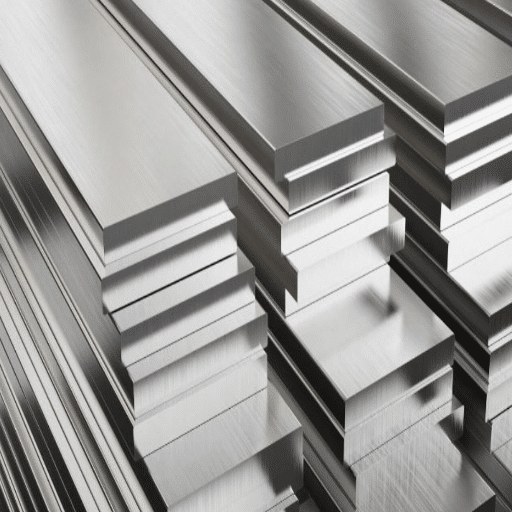
Understanding Price Difference
The stainless steel 300 and 400 series price gap is supoported by competitive market conditions and the raw materials required. In essence, the 300 series has higher nickel and chromium percentages than the 400 series. Scarce materials and expensive metals like nickel, which is used in batteries and energy technologies, drives prices up and marks disproportionate spending.
Almost the entire 400 series is devoid of nickel, often using manganese or chromium to make up the alloying elements. This leads to the alteration of the steel being made more budget oriented while having lessened corrosion resistance. Lower usage as well as easy access to volatile grades means better cost efficacy, resulting in 400 series alloys being more suitable.
Furthermore, Manufacturing operations alongside worldwide demand trends are equally important. The entire 300 series is usually salted and marketed for refinement, polishing, and more advanced aftermarket for enhanced finish attributes, which increases the price even more. On the other side, particular grades driven by the construction or vehicle, or energy sector tend to vary more by region, which increases cost throughout both series. Knowing these factors helps in deciding on materials selection that optimally captures the elements of best value, balanced with their performance, and reliability of supply.
Factors Affecting Series Stainless Steel Price
Understanding the determinants of price series stainless steel is a necessity for adequate procurement undertakings. As such, below are five major influencing elements.
- Cost of Raw Materials: The primary addends of stainless steel, nickel, iron, molybdenum, and chromium, directly affect the pricing of stainless steel. Changes in the market rates of these components directly affect the value of production. For example, augmenting the costs of nickel, which is used in austenitic grades like 304 and 316, is going to equally proportionate prices of the latter.
- Manufacturing and Production Activities: The pricing is largely determined by the production processes and the more mechanical processes involved. For cores, a higher form of polishing and advanced surface finishing, say for mirror or brushed finishes, takes much more resources and efforts, and consequently more costs.
- Energy Expenses: Electricity and fuel costs are capable of varying between regions and time periods which significantly impacts the price of stainless steel. This is due to higher energy consumption – both thermally and electrically – required during melting and casting.
- Regional Dynamics of Demand and Supply: The prices of stainless steel vary in different regions because of local demand, resource availability, and manufacturing capabilities. For instance, markets with high demand in the automotive and construction industries tend to have higher prices because of supply bottlenecks or distance to transport markets.
- Trade Policies, Tariffs And Logistics: Stainless steel as a commodity incurs critical price impacts due to global trade policies, import-export dutie, and even logistical expenses. Increased costs with tariffs placed on imported raw materials or finished goods, shipping hold-ups, and rising freight charges greatly affect cost stability.
From these studies, it is possible for buyers to anticipate trends and develop strategies that address rising costs more strategically.
Stainless Steel Grades and Alloy Composition
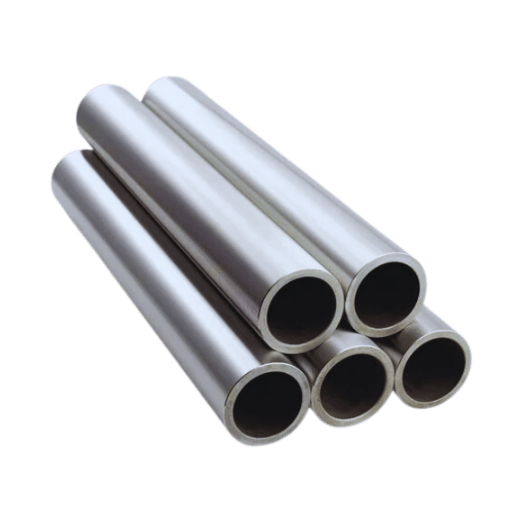
The Role of Chromium and Nickel
Both alloying elements, chromium and nickel, are indispensable because they considerably affect the characteristics and functioning of stainless steel. As the leading reason for stainless steel’s corrosion resistance, chromium present in a 10.5% to 30% concentration range, enables the formation of a passive layer of chromium oxide on the surface, which makes it possible for oxidation and other forms of environmental attacks to be blocked. Protection against rust, as well as corrosion, becomes stronger with an increase in chromium content, especially in severe conditions like industrial and marine use.
In austenitic stainless steels like grade 304, nickel is usually added in the range of 8% to 10%. This improves the material’s toughness and formability. Austenitic crystal structure is also stabilized by nickel, enabling stainless steel to retain the alloy’s non-magnetic and ductile traits at much lower or higher temperatures. Moreover, nickel’s ability to resist corrosion cracking caused by chloride-stressing makes this element essential for chemical processing, food production, desalination and other industries.
Nickel and chromium aid one another and work together. While nickel improves mechanical properties and versatility, chrome increases corrosion resistance. While selecting the optimum stainless steel grade for a certain application that needs these two argue, striking the balance is important, considering cost-performance metrics.
Differences in Carbon Content and Manganese
The mechanical and chemical characteristics of stainless steel are extraordinarily influenced by carbon content and manganese levels. Carbon, being one of the crucial parts of an alloy, contributes mainly toward increasing the hardness and strength of the steel, but at higher concentrations, it reduces ductility. The same can be observed in low carbon grades such as “L” grade (e.g., 304L or 316L). These are specially formulated to reduce carbide precipitation during welding, boosting the enhancement of corrosion resistance in applications that suffer from intergranular attacks.
Manganese, on the contrary, has fewer effects on the alloy since it is used as a nickel substitute in certain grades of stainless steel. This substitution occurs particularly in places where the price of nickel is unstable. The addition of manganese serves multiple purposes as it stabilizes the austenitic structure of the steel while increasing the toughness, wear resistance, and work hardening rate. A well-known example under such conditions is the 200-series stainless steel, which is high in manganese, acting as a cheaper substitute to the nickel-rich 300 series. The catch here is that higher manganese content could mean facing other problems, like greater chances of pitting corrosion under certain conditions. An unbalanced alloy composition is needed to counter this.
Having a clear understanding of the carbon and manganese concentrations intertwined is essential for effectively picking an appropriate grade out of the many stainless steel grades. Focusing on these elements provides better chances of efficiently achieving the desired outcome while maintaining operational constraints. The achievable balance can be between mechanical properties, corrosion resistance, and cost.
Impact on Austenitic and Martensitic Stainless Types
The inclusion of chromium and nickel renders austenitic stainless steels as alloys that have exceptional formability and corrosion resistance. Maintaining carbon concentrations aids in reducing the precipitation of carbides from the weld seams, preserving intergranular corrosion resistance. The stabilisation of the austenitic phase involving manganese allows for the preservation of nitrogen grades. Austenitic alloys, however, face challenges due to excessive carbon content, leading to the formation of chromium carbides. As a result, passivation layers become compromised, leading to increased susceptibility to localized corrosion.
Particularly with higher carbon content, martensitic stainless steels transform austenite into martensite upon quenching, leading to an increase in hardness and strength. Though enhanced wear resistance is offered, the reduced chromium content leads to comparatively lower corrosion resistance. A stringent balance between chrome and carbon must be maintained, which is essential in achieving favorable levels of mechanical strength and corrosion resistance. Recent advances in alloying techniques and thermomechanical processing focus on balancing the fundamental brittleness of martensitic grades, broadening their application in high-stress environments.
Continued research and computer simulations have enhanced our comprehension of the interactions between carbon, manganese, and other alloying constituents, allowing for the exact tailoring of stainless steels to fulfill given industrial needs.
References
-
Stainless steel AISI grades for PM applications – Discusses the classification and properties of stainless steel grades, including 300 and 400 series.
-
The hardening of type 316L stainless steel welds with thermal aging – A study from MIT focusing on stainless steel properties under specific conditions.
-
Comparative Corrosion Resistance Of 200 and 300 Series Stainless Steels In Chemical Manufacturing Processes – An academic article analyzing corrosion resistance in stainless steel series.
Frequently Asked Questions (FAQ)
Q: What is the main difference between 300 series and 400 series stainless steel?
A: The primary difference between 300 series and 400 series stainless steel is their composition. 300 series stainless steel, such as 304 and 316, contains nickel, which provides excellent corrosion resistance and austenitic properties. In contrast, 400 series stainless steel has little to no nickel, making it ferritic or martensitic, which influences its magnetic properties and overall cost.
Q: How does the 400 series stainless steel price compare to the 300 series?
A: The 400 series stainless steel price is generally lower than the 300 series due to the absence or minimal presence of nickel. Nickel is a costly element, and its reduction in 400 series grades makes these alloys more affordable.
Q: What are the mechanical properties of 300 series stainless steel vs 400 series?
A: In terms of mechanical properties, 300 series stainless steels, like 304 stainless steel, typically have higher yield strength due to their austenitic nature. The 400 series, being ferritic or martensitic, may have lower yield strength but offer better resistance to stress corrosion cracking.
Q: Can you explain the series stainless steel price difference between the 300 and 400 series?
A: The price difference between 300 and 400 series stainless steel is mainly due to the content in the 400 series, which lacks expensive nickel, making it generally cheaper. Additionally, the production processes and demand for specific applications influence the overall cost of these types of steel.
Q: What are the common applications of 304 and 316 stainless steel compared to 400 series grades?
A: 304 and 316 stainless steels are widely used in environments requiring high corrosion resistance, such as in kitchen equipment, chemical containers, and medical devices. On the other hand, 400 series grades are often used in applications like automotive exhaust systems and home appliances, where high strength and magnetic properties are needed.
Q: How does the presence of nickel affect the properties of 300 series stainless steel?
A: Nickel in 300 series stainless steel, such as in 304 and 316, enhances its corrosion resistance, ductility, and ability to withstand extreme temperatures. It contributes to the austenitic structure, making these alloys non-magnetic and more versatile for various applications.
Q: What types of steel alloys are included in the 400 series?
A: The 400 series includes ferritic and martensitic stainless steels, such as grade 400 series, which are characterized by their chromium content and low or absent nickel content. Common 400 series stainless steel grades include 410, 420, and 430, each with varying properties suited for different industrial uses.
Q: Are there any magnetic properties in 400-series stainless steel?
A: Yes, 400-series stainless steel alloys, being ferritic or martensitic, generally exhibit magnetic properties. This is in contrast to the non-magnetic nature of austenitic 300 series, which contains nickel.
Q: What is the significance of the yield strength in determining the application of stainless steel?
A: Yield strength is crucial in determining the suitability of stainless steel for specific applications. Higher yield strength, often found in 300 series, makes it ideal for structural applications requiring durability and resistance to deformation under stress.
Q: How does the 200 series compare to the 300 and 400 series stainless steel?
A: The 200 series stainless steel is similar to the 300 series but uses manganese instead of nickel, making it a cost-effective alternative. However, it usually offers lower corrosion resistance compared to both the 300 and 400 series, making it suitable for less demanding applications.

